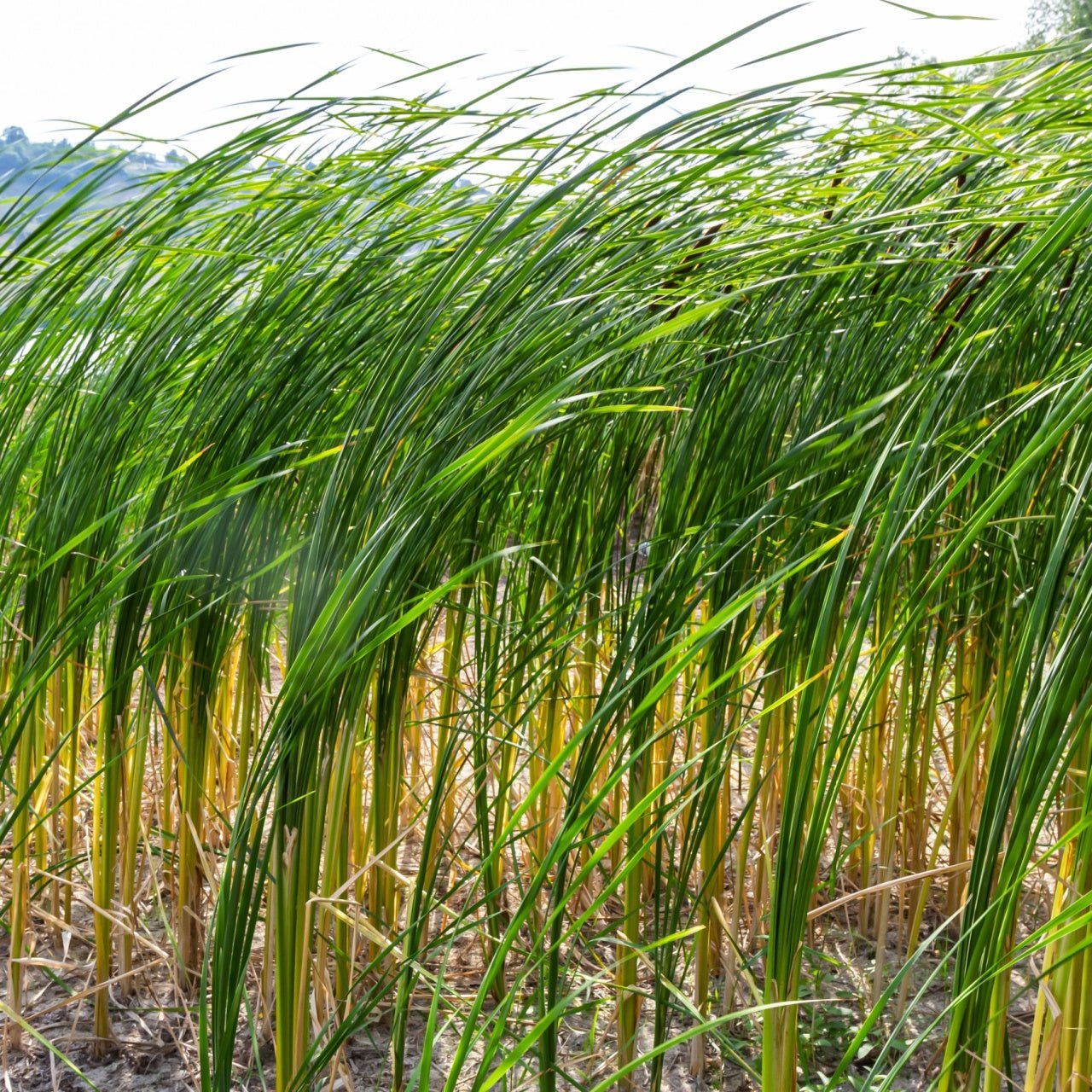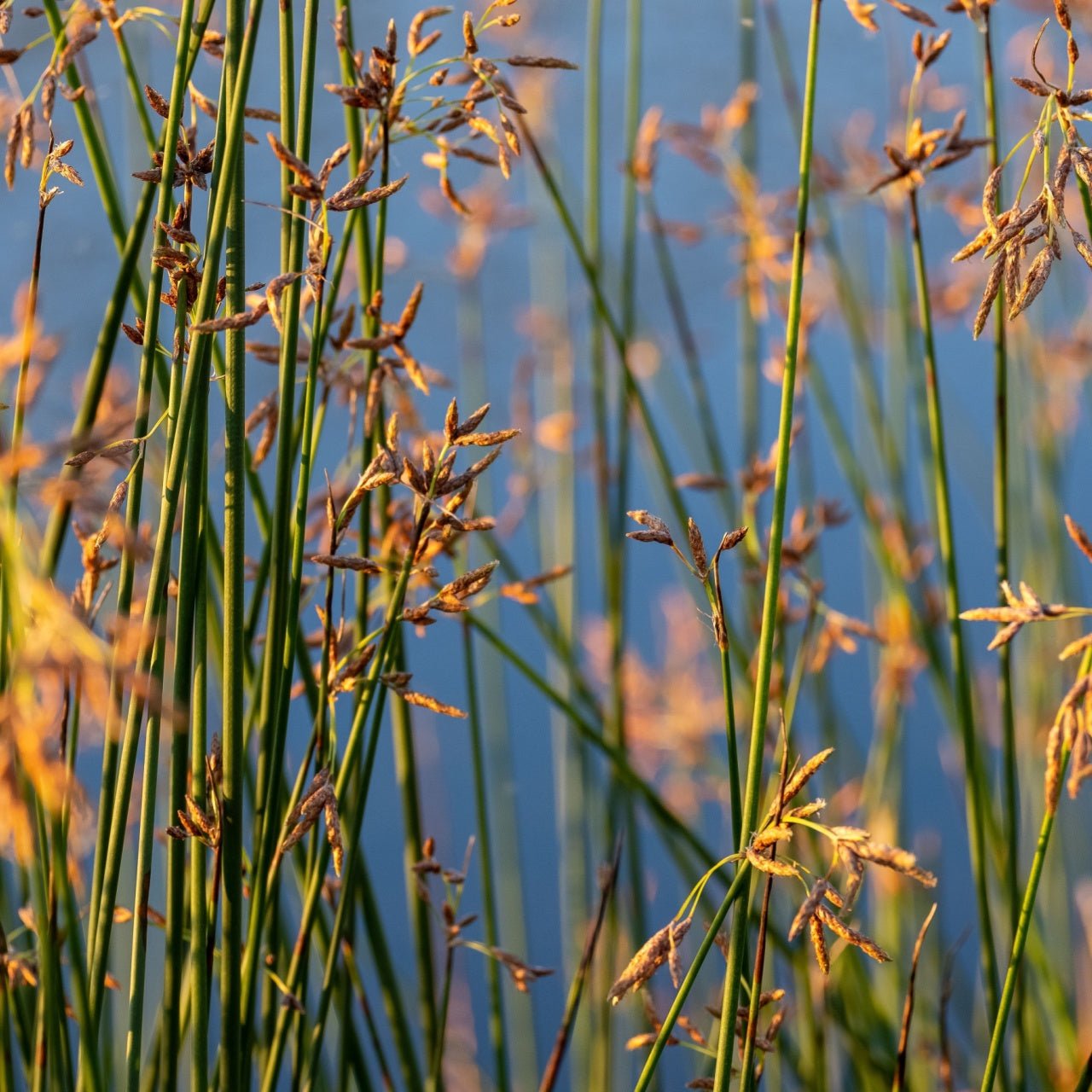



Bulrush
We sell bare root plants - click here to see what you'll receive
Bulrush: Scirpoides Holoschoenus
Bulrush offers a range of benefits when integrated into landscaping projects. These versatile plants, commonly found near water bodies, bring a distinct and natural charm to outdoor spaces while serving functional and ecological roles.
The plugs have long, floppy, dark green stems that are triangular. The spongy stems support spikey blossoms that occasionally sag and reach just below the stem's tip. Each flower spike usually produces anywhere from 50 to 100 blooms that range from 1.5 to 4.5 inches in length each spring. The leaf blades' characteristic "V" shape gives them a sheath-like appearance as they round the lengthy stem. Depending on the kind, flowers can be any yellow, red, or brown shade. The most color change tends to occur towards the end of fall.
Create Dramatic Silhouettes With Bulrush
The upright growth of their long, thin stems makes them a dramatic vertical feature in any setting. Their tall stalks provide a striking visual contrast when seen against a water background. The foliage is verdant and showy in the spring and summer, with large spikes of flowers. It can take on a golden or brown hue in the fall, creating a cozy background. The plugs form striking silhouettes against the sky, particularly at dawn or sunset.
Bulrush Can Get Up To 10 Feet Tall
Their delicate texture produces lots of textural contrast when combined with the robust leaves of broad-leaved plants. They also pair well with the fluffy plumes of ornamental grasses. Their tall, thin stems and growth patterns give their surroundings a sense of height and depth. They can get up to 10 feet tall.
It Is Excellent For Fish Habitats
It has deep root systems that help keep soil in place. This is especially beneficial in areas with freshly exposed soil and sloped banks. Many people use them for wetland reclamation projects. When grown in clusters or rows, these plants act as wind barriers, further helping with erosion control. These wind barriers can also double as natural privacy screens. Another way that they improve soil vitality is by absorbing harmful metals and bacteria. This reduces water pollution, making the soil healthier and less likely to erode.
It is native to marshes and is a water purifier! They also shelter birds and some types of amphibians.
What Are the Characteristics of the Plant
They are thorny grasses. They're usually round and 1-3 feet high but can grow as high as 5-10 feet, depending on the landscape. They have green stems and seed heads.
The plants are perennials that grow up in one year and start off the following year from seed. They are usually cultivated by growing in spring, flowering in summer, fruiting in autumn, and root regeneration in winter.
Where Is the Best Place For It to Grow
It does best in a swampy landscape with waterlogged soils, such as a wetland, pond, or marsh, and particularly at the edge of a lake or stream. It is hardy in full sun or partial shade.
Bulrushes are very scarcely apparent flowering plants with paniculated spikes. They usually flower in midsummer and are followed by seed heads that help to spread the plant.
| Planting zone | [4, 5, 6, 7, 8, 9] |
|---|---|
| Height At Maturity | Under 3 Feet |






Bulrush

